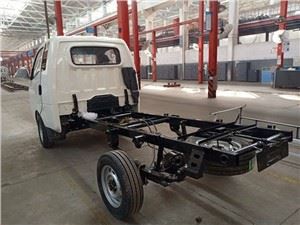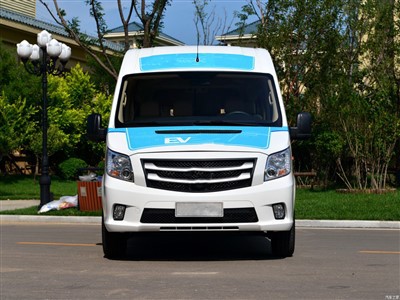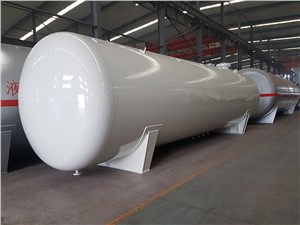Understanding Hook Lifts: Everything You Need to Know
Introduction
Hook lifts are an essential piece of equipment in the waste management and construction industries. They are designed for transporting, lifting, and unloading various types of containers and loads efficiently. In this article, we will delve into the details of hook lifts, their applications, benefits, and how they differ from other lifting systems. Whether you’re a contractor looking to optimize your operations or a waste management professional seeking to enhance your workflow, this comprehensive guide will provide you with everything you need to know about hook lifts.
What is a Hook Lift?
A hook lift is a hydraulic lifting system that utilizes a hook mechanism to lift and transport containers. These systems typically consist of a truck equipped with a hydraulic arm that can extend, retract, and pivot to lift containers from the ground and place them securely on the truck bed. Hook lifts are particularly popular due to their versatility and efficiency in handling a variety of loads.
Components of a Hook Lift System
The primary components of a hook lift system include:
- Truck chassis: The vehicle that carries the hook lift system.
- Hydraulic arm: The mechanism that provides lifting power through hydraulic pressure.
- Hook mechanism: The part that attaches to the container, allowing it to be lifted and secured.
- Container: The load being transported, which can vary in size and shape.
Types of Hook Lifts
There are several types of hook lifts, including:
- Standard Hook Lifts: Basic systems designed for typical container sizes.
- Roll-Off Hook Lifts: Designed specifically for roll-off containers typically used in waste disposal.
- Heavy-Duty Hook Lifts: These systems can handle larger, heavier loads and are often used in construction settings.
Applications of Hook Lifts
Hook lifts are predominantly used in various sectors, including:
Waste Management
In waste management, hook lifts are used to transport waste containers, dumpsters, and recycling bins. Their ability to quickly load and unload means more containers can be serviced in less time.
Construction
Construction companies utilize hook lifts to transport materials, debris, and equipment. Their flexibility allows them to service different job sites with ease.
Landscaping
For landscaping projects, hook lifts can carry bulk materials like soil and mulch, as well as equipment necessary for large-scale projects.
Benefits of Hook Lifts
Efficiency
One of the main advantages of using hook lifts is their efficiency. The ability to quickly load and unload containers means less downtime and more work completed in a day.
Versatility
Hook lifts can accommodate various container sizes and types, making them ideal for multiple industries. This versatility helps businesses diversify their services.
Cost-Effectiveness
By reducing labor costs and improving transportation efficiency, hook lifts can lower overall operational expenses for businesses that rely on them.
How Hook Lifts Work
The operation of a hook lift involves several steps:

Step 1: Positioning
The truck must be positioned close to the container for effective lifting.
Step 2: Hook Engagement
The hook mechanism engages the container by sliding underneath it until it secures the load.
Step 3: Lifting
The hydraulic arm activates, lifting the container off the ground and aligning it with the truck bed.
Step 4: Transport
Once secured, the truck transports the container to the destination.
Step 5: Unloading
The process is reversed at the destination, with the hydraulic arm lowering the container into place. This system can be performed by the driver without additional workers needed, improving efficiency.
Choosing the Right Hook Lift
Factors to Consider
When selecting a hook lift system, consider the following:
- Load capacity: Ensure the hook lift can handle the weight of the containers you plan to use.
- Vehicle compatibility: Confirm that the hook lift system is compatible with your truck type.
- Hydraulic system quality: Opt for reliable hydraulic components to ensure safe and smooth operation.
Common Brands

Some reputable brands in the hook lift market include:
- Lindgren: Known for durable designs meant for heavy-duty applications.
- Fassi: Offers versatile and powerful hook lift systems.
- Rudolph: Specializes in customizable hook lift solutions.
Maintenance of Hook Lifts
Routine Inspections
Regular inspections are crucial for maintaining optimal performance. Check for any leaks, wear, and mechanical issues. Following manufacturer guidelines will help prolong the lifespan of the equipment.
Hydraulic System Maintenance
Monitor the hydraulic fluid level and replace it as needed. Clean or replace hydraulic filters to prevent clogging.
Safety Considerations
Operator Training
Proper training for operators is essential to ensure safe operation. Operators should be familiar with the controls and understand best practices for loading and unloading.
Loading Safety
When loading, ensure the truck is on stable ground, and communicate with any ground personnel to minimize risks.
Practical Examples and Tips
Example 1: Implementing Hook Lifts in a Waste Management Company
- Conduct a needs assessment to determine container sizes frequently used.
- Choose a hook lift system that matches your operational demands.
- Train the staff on safety protocols and operational procedures.
Example 2: Using Hook Lifts in Construction Projects
- Utilize heavy-duty hook lifts for transporting materials on large sites.
- Regularly maintain equipment to prevent breakdowns during critical times.
Hook Lifts vs. Other Lifting Systems
Hook Lifts vs. Flat Beds
Hook lifts offer more flexibility in loading and unloading compared to flatbed trucks, which require manual labor to secure and release loads.
Hook Lifts vs. Roll-Off Systems
While both systems serve similar purposes, roll-off systems require a larger space for operation, whereas hook lifts are more compact and versatile.
Frequently Asked Questions (FAQ)
1. What is the average cost of a hook lift system?
The cost varies based on specifications and brands but typically ranges from $20,000 to $100,000.
2. How much weight can a hook lift carry?

The weight capacity can range from 10,000 lbs to over 30,000 lbs, depending on the model and configuration.
3. Are hook lifts suitable for residential waste collection?
Yes, hook lifts can efficiently handle residential waste containers and provide quick access to drop-off sites.
4. How often should hook lifts be maintained?
Routine inspections should be conducted monthly, with more comprehensive services performed annually or as needed.
5. Can hook lifts be used in harsh weather conditions?
Yes, but it is vital to take precautions and ensure that the equipment is properly maintained to prevent issues in extreme temperatures.
6. Are there insurance requirements for hook lift operations?
Yes, businesses operating hook lifts should have liability insurance and may need to meet specific local regulatory requirements.
